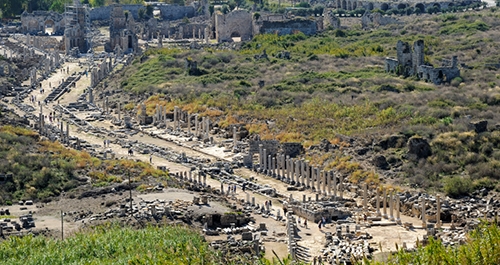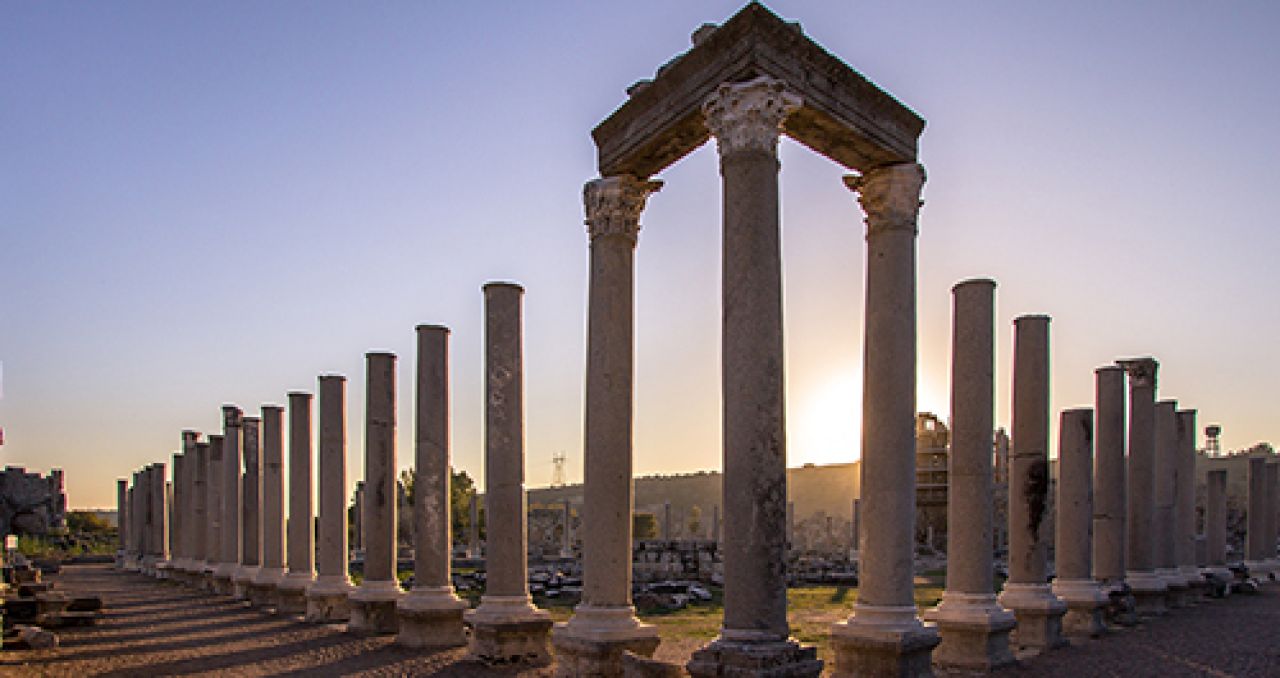Perge Ancient City: A Journey Through History
Perge Ancient City: A Journey Through History
Perge, one of the first places that come to mind when you think of an ancient city, was once the capital of the Pamphylia Region. Perge is one of the most magnificent settlements among Roman cities with its planned city model and structuring character. It is not only one of the most regular and meticulous cities of the Pamphylia Region, but also of Anatolia. This magnificent city, located in the Aksu district of today's Antalya, fascinates its visitors with its historical and archaeological richness. Visiting Perge is like taking a journey through time.
Location and Transportation of Perge
It is very easy to reach Perge, which is only 17 km away from the center of Antalya. After arriving in Antalya by air or road, you can easily reach Perge Ancient City by passing through the Aksu district. Especially for those who choose Antalya for their summer vacation, discovering this ancient city with a day trip is a great opportunity.
General Information About Perge
Perge, famous for its architecture and sculptures, was included in the UNESCO Temporary Heritage List in 2009. The city, which became rich thanks to the fertile lands of the Pamphylia Plain and the Kestros (Aksu) River, was an important port city in ancient times. Thanks to the transportation on the Kestros River, it became an important trade center despite not being on the coast.
The chief goddess of Perge was Artemis, and she was depicted as the "Queen of Perge" on the coins minted in the city. The sculptors of the city were so famous that a Sculpture School was established here in the 2nd century AD. This school made a great contribution to the artistic and cultural development of Perge.
Perge, which is also mentioned in the Bible, is the starting point of the St. Paul's Road. Perge, which is an important religious center for Christians, has brought different cultures together thanks to this feature. It attracts attention with its streets, columns, gates and one of the best-preserved stadiums in Turkey.
History of Perge
The history of Perge dates back to the Late Chalcolithic Age. It is known that the first settlements in the region began in this period. The city, which also had an important place during the Hittite Empire, friendly opened its doors to Alexander the Great. After Alexander the Great, Perge, which came under the rule of the Kingdom of Pergamon, later joined the Roman Empire.
Perge, which lived its most brilliant period during the Roman period, had many rich and magnificent structures built. During this period, the city showed great development in commercial and cultural terms. Perge, which became a bishopric center with the spread of Christianity, was slowly abandoned after the Arab raids. However, the structures that have survived to the present day still reveal the splendor of the city.
Structures You Can See in Perge
You can see the following structures in Perge Ancient City:
- Perge Theater: The theater, one of the most important structures of the ancient period, still has an impressive appearance today.
- Perge Stadium: The stadium, with a capacity of approximately 12,000 people, hosted ancient sports events.
- Roman Gate: This structure, which is the entrance gate of the city, reflects the splendor of the Roman period.
- Septimus Severus Fountain: This fountain, built in the name of the Roman Emperor Septimus Severus, bears the architectural features of the period.
- Monumental Gate (Propylon): The Propylon, which is the main entrance gate of the city, is a magnificent structure.
- Southern Bath: This structure, which reflects the ancient bath culture, sheds light on the social life of the period.
- Hellenistic City Gate and Towers: These structures, which bear the traces of the Hellenistic period, were an important part of the city's defense system.
- Hadrian's Arch: This arch, built in the name of the Roman Emperor Hadrian, is one of the important structures of the city.
- Agora - Macellum: The Agora, which is the central square of the city, was the center of commercial and social events.
- Southern Basilica: The basilica, one of the important structures of the Christian period, sheds light on the religious life of the period.
- Columned Main Street: This road, which is the main street of the city, connected the shops and other important structures.
- Demetrius Apollonios Arch: This arch was built to commemorate the important people of the city.
- Kestros Fountain: This fountain, which brought water from the Kestros River, met the city's water needs.
- Columned West Street: This street, which extends in the west direction of the city, connected important structures.
- Palaestra – Gymnasium: These structures, which were ancient sports and education centers, contributed to the physical and mental development of young people.
It is recommended that you spare at least 2-3 hours to fully visit Perge Ancient City. If you are interested in archeology and want to examine every detail, this period can take up to 5 hours.
.png)

